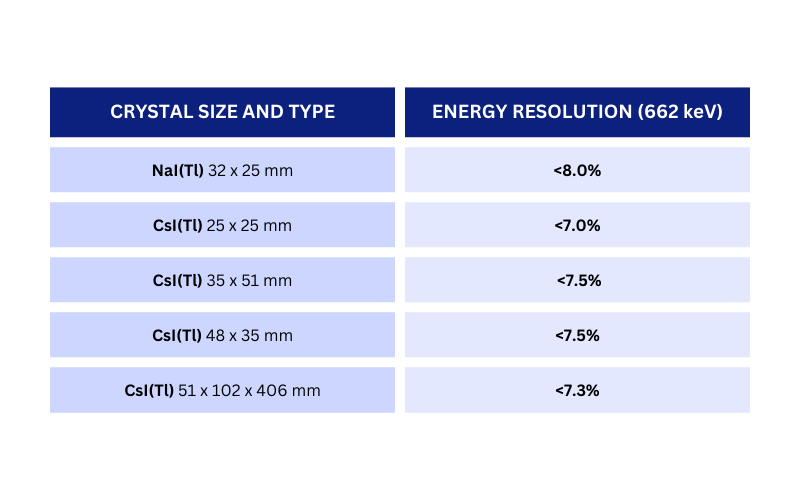March 1, 2024 - SiPM Readout Method to Improve Scintillation Performance
Berkeley Nucleonics offers Silicon Photomultiplier Tubes (SiPMs) as a light read-out method for scintillators. Opposed to traditional photomultiplier tubes (PMTs), SiPMs behave completely differently in spectroscopic behavior. SiPM elements work best where small size and low voltage (20V - 30V) are required. Typically they are arranged in matrices either 6x6, 3x3, or 4x4 mm. Notably, they are mechanically compact and insensitive to magnetic fields.
![]()
SiPMs can be coupled with a variety of detector materials, including plastic, liquid, and inorganic materials (CeBr3, YAP:Ce, etc). With plastic detectors such as EJ-440, the SiPM can be optically coupled to a built-in amplifier which
The placement and arrangement of the SiPMs often impact crystal performance directly. For instance, with large scintillation crystals such as Nal(Tl) between 4x4 inches and 5x5 inches, the SiPMs must be as few as possible and intricately placed to reduce capacitive noise on the signal. Depending on the application and aspect ratio of the scintillation crystal, it may be useful to place the electronics on only one side of the crystal for optimal light readout. With too many SiPMs on a large surface area, the energy resolution can degrade, and the capacitive noise increases.
All SiPM-based detectors are intended to be used at room temperature. Cooling SiPM electronics below 60 C can damage the material. Procedures to encompass the electronics such as shielding to prevent damage from temperature can be taken. However, this is not recommended. The radiation in the environment, for instance, high neutron flux, can also reduce SiPM quality. It is important to consider the radiation types, energy levels, and temperature in the environment.
Looking for more information on SiPM scintillators for your application? Please contact us!

